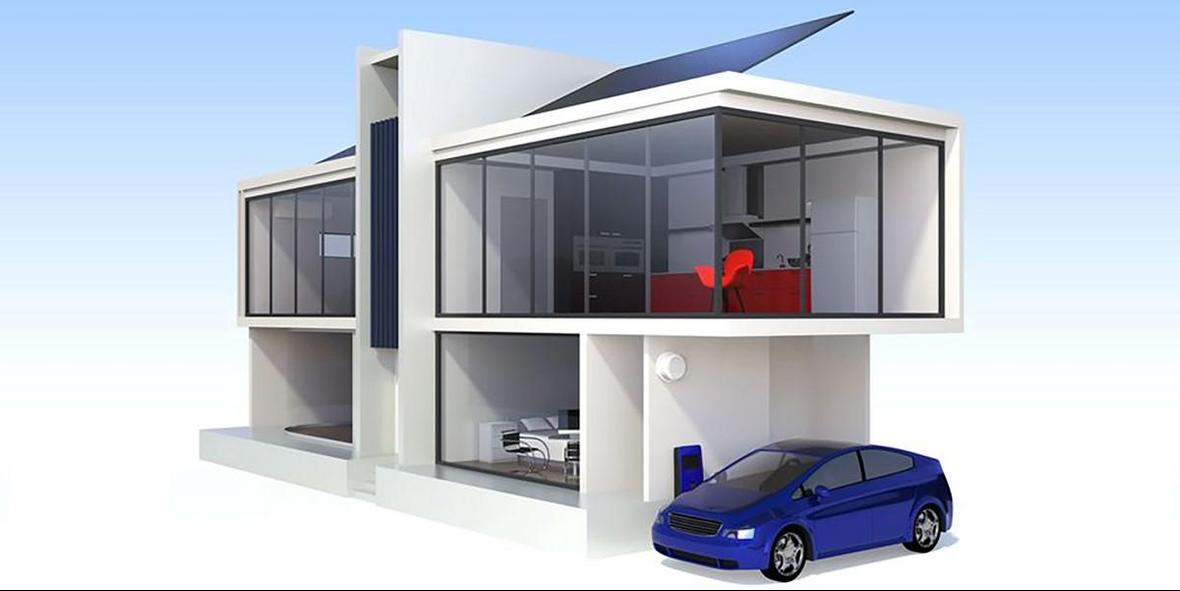21. May 2021
Energy Management: integrating EVs with KNX for intelligent charging

Casto Cañavate looks at the growth of the electric vehicle market and how it makes sense to integrate charging within a KNX energy management system at home or at work.
In recent years we have seen a dramatic change in the automotive sector. Whilst consumers are opting to buy the more sustainable electric vehicle (EV), there are also various other parties who are contributing to this revolution.
First, the European Commission has given clear directions for an economy that envisages net-zero emissions for transport by 2050.
Second, there are new organisations being formed to promote the benefits of change. A good example is the 'Platform for electromobility' which aims to move people and goods using sustainable electricity. The Platform for electromobility estimates that 1 million new jobs will be created in the e-mobility sector by 2030 and, perhaps more importantly, that there will be a EUR 1 billion cut on oil spend each day in Europe.
Lastly, research indicates significant growth in the EV market over the next few years. According to MarketsandMarkets, it is estimated that 27 million EVs will be sold worldwide by 2030. This compares with the less than 9 million EVs sold by the end of 2020.
Are the brakes still on?
Despite these positive signs, there are also some issues that are holding back growth, and these are mainly related to the CO2 emissions caused by building EVs and their pricing. For many different reasons, the current cost of EVs is higher than combustion cars, so many buyers are still opting for alternatives. The rule of thumb is: if you drive less than 15000km per year, it is cheaper to get a non-electric car. In addition, CO2 emissions generated in the creation of an EV, including the battery and car, are higher than for a combustion car.
There are other factors that might put people off from currently investing in an EV, such as a lack of charging station infrastructure, concerns over the materials used in the batteries and the range/mileage. Nevertheless, once the economy of scale has been reached, pricing and CO2 emissions will reduce and e-mobility will become ubiquitous.
Intelligent charging with KNX
KNX Association sees integrating EV charging as an important part of the energy management of homes and buildings, and has therefore extended KNX technology with an application domain to integrate charging stations within a KNX energy management system. There are already KNX devices launched by KNX Members that allow a range of charging station brands to be connected to KNX, including, already, stations from ABB, ABL, ebee, KEBA, Mennekes and Stöhr. We will soon see new KNX devices with charging possibilities as well as new brands to connect to.
The new devices for this integration include features such as:
- Displaying when the charging station is occupied or free.
- Visualising the charging progress using various handheld devices.
- Defining a specific charging time or limiting the charging power depending on the current tariff on the grid or the current self-production or consumption in the home or building.
- Monitoring and reporting to inform users of the overall energy consumption, the last charge, and other important data such as error reporting, which is very useful for building administrators.
- And finally, it goes without saying that these new products and features also offer support for KNX Secure, for protection against hackers.
Conclusion
The EV market is clearly growing, and the demand for charging vehicles whilst at work or at home will only increase as the market expands. KNX provides the mechanism to do this intelligently and securely, by integrating the charging of EVs within an energy management system that already covers all aspects of a home or building's energy consumption and generation.
Casto Cañavate is the Marketing Manager for KNX Association.
Highlights
-
 Press
PressKNX Launches KNX Standard Version 3.0.4
KNX Association is proud to announce the release of Version 3.0.4 of the KNX Standard to its manufacturer members. The KNX ... -
 News
NewsStart 2026 with ETS - Save 26% on New Licenses
To kick off 2026, KNX Association is offering 26% discount on new ETS6 licenses for a limited time only. -
 KNXtoday
KNXtoday#KNXis35: KNX history and evolution
KNX is 35. This worldwide building control standard, initiated by a handful of visionary European manufacturers, now has ...
